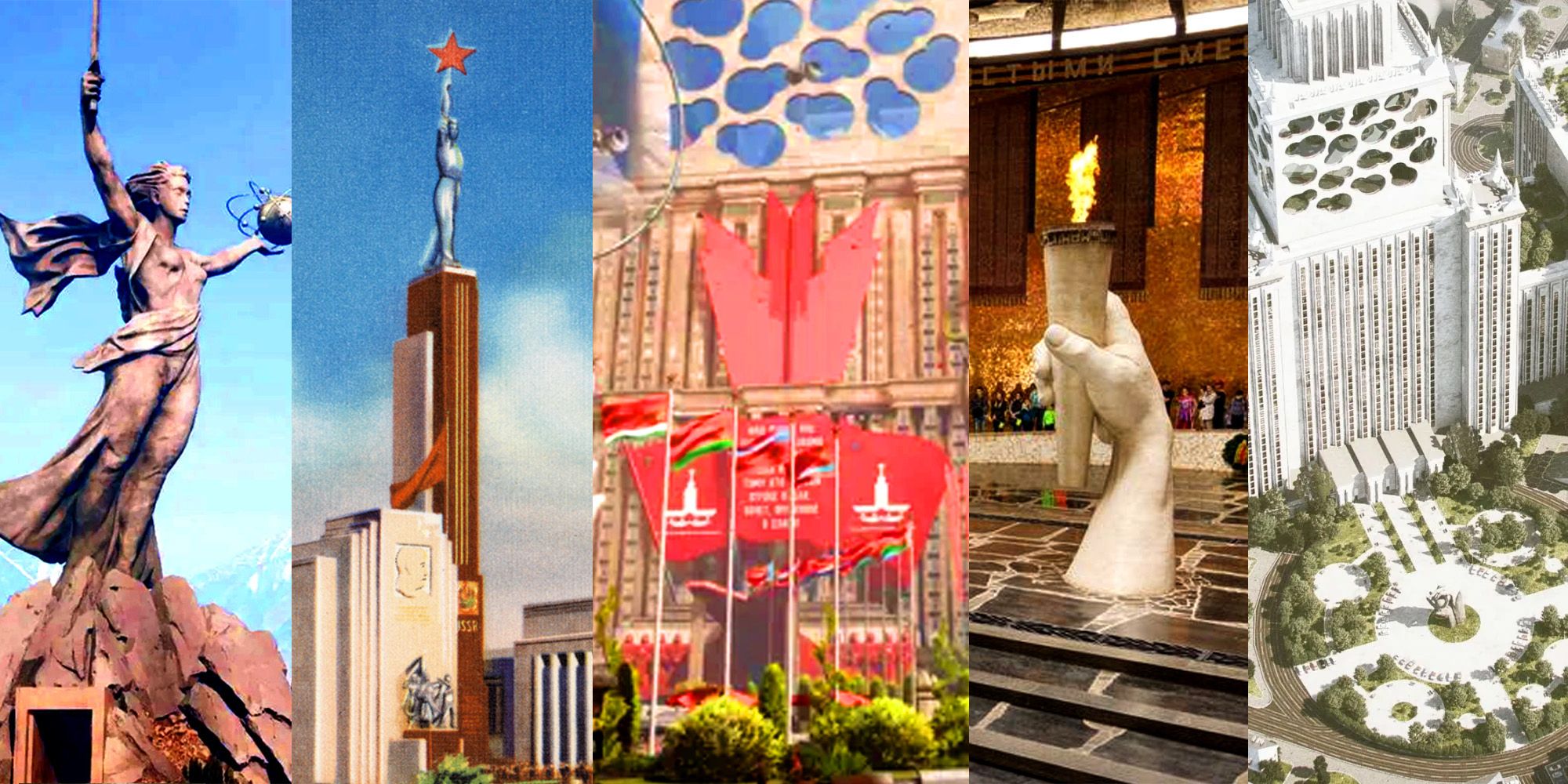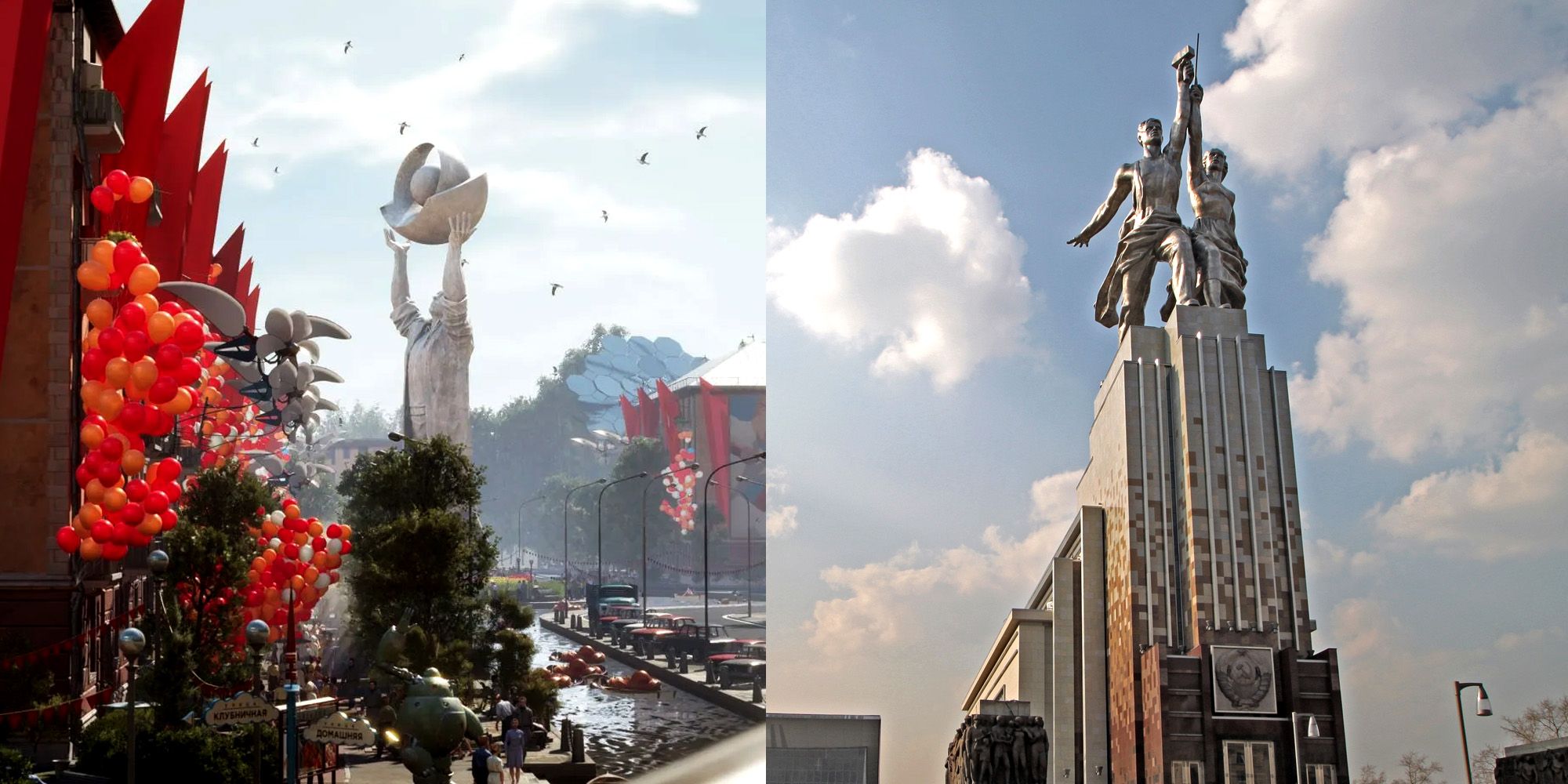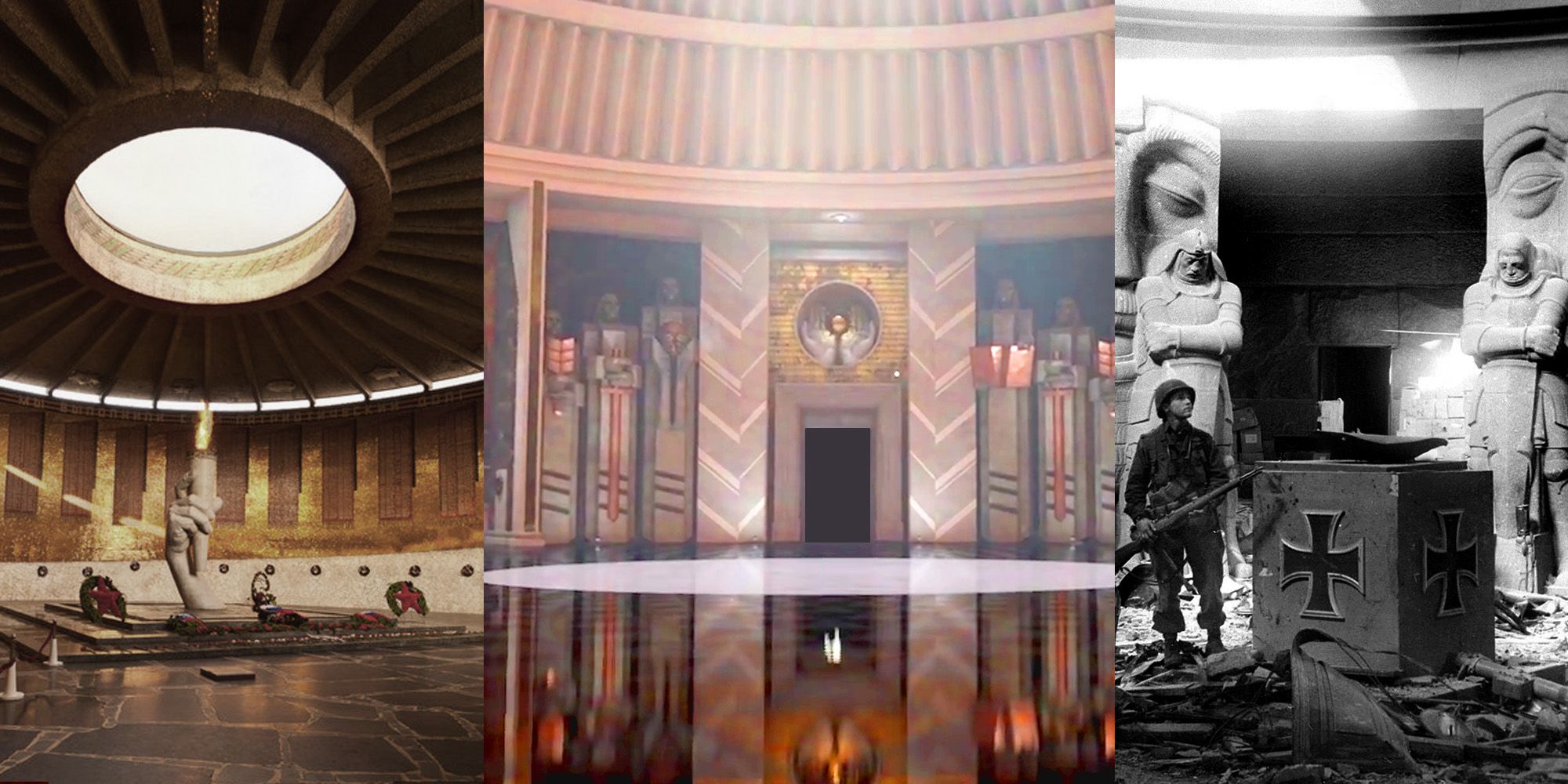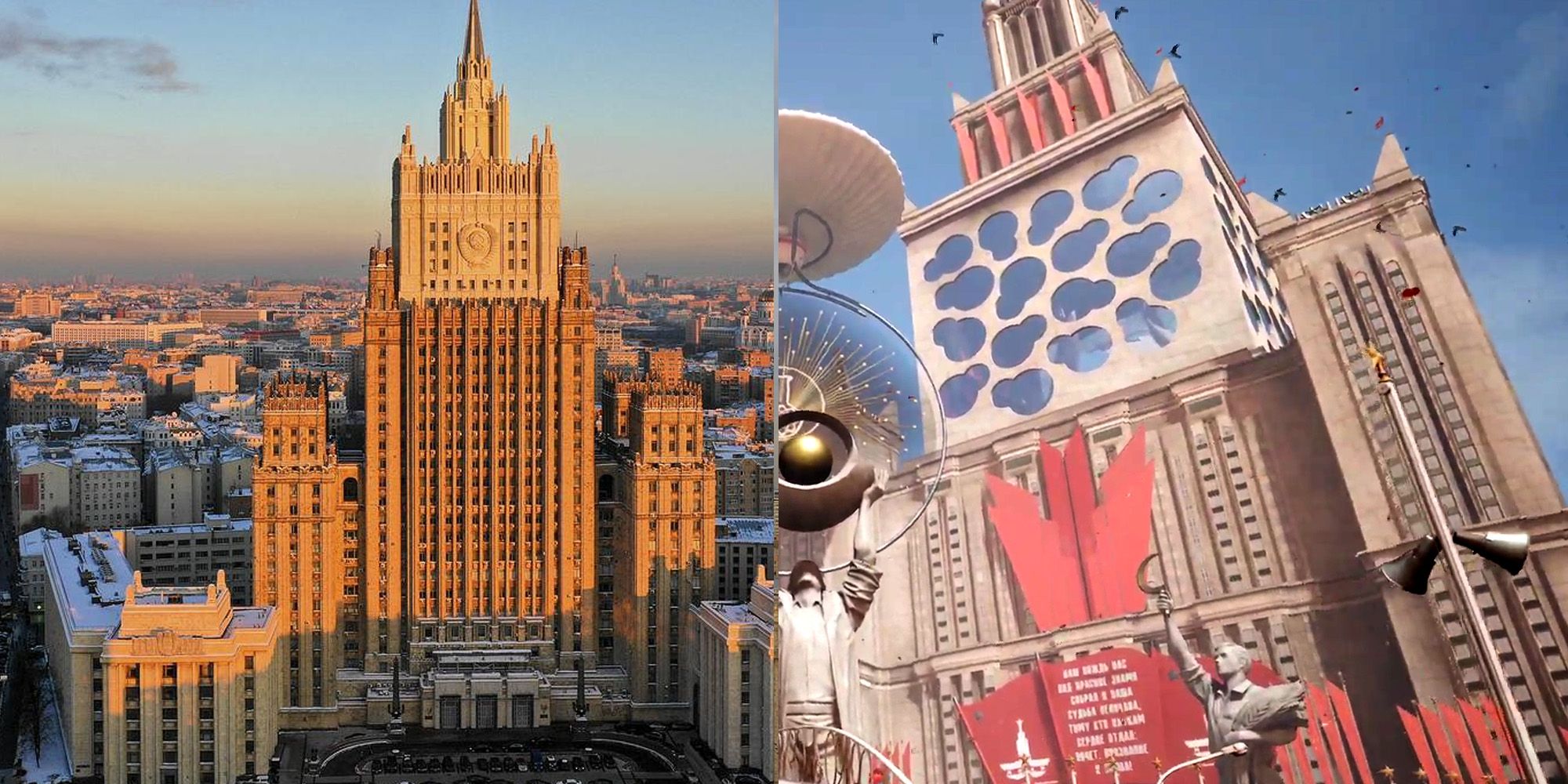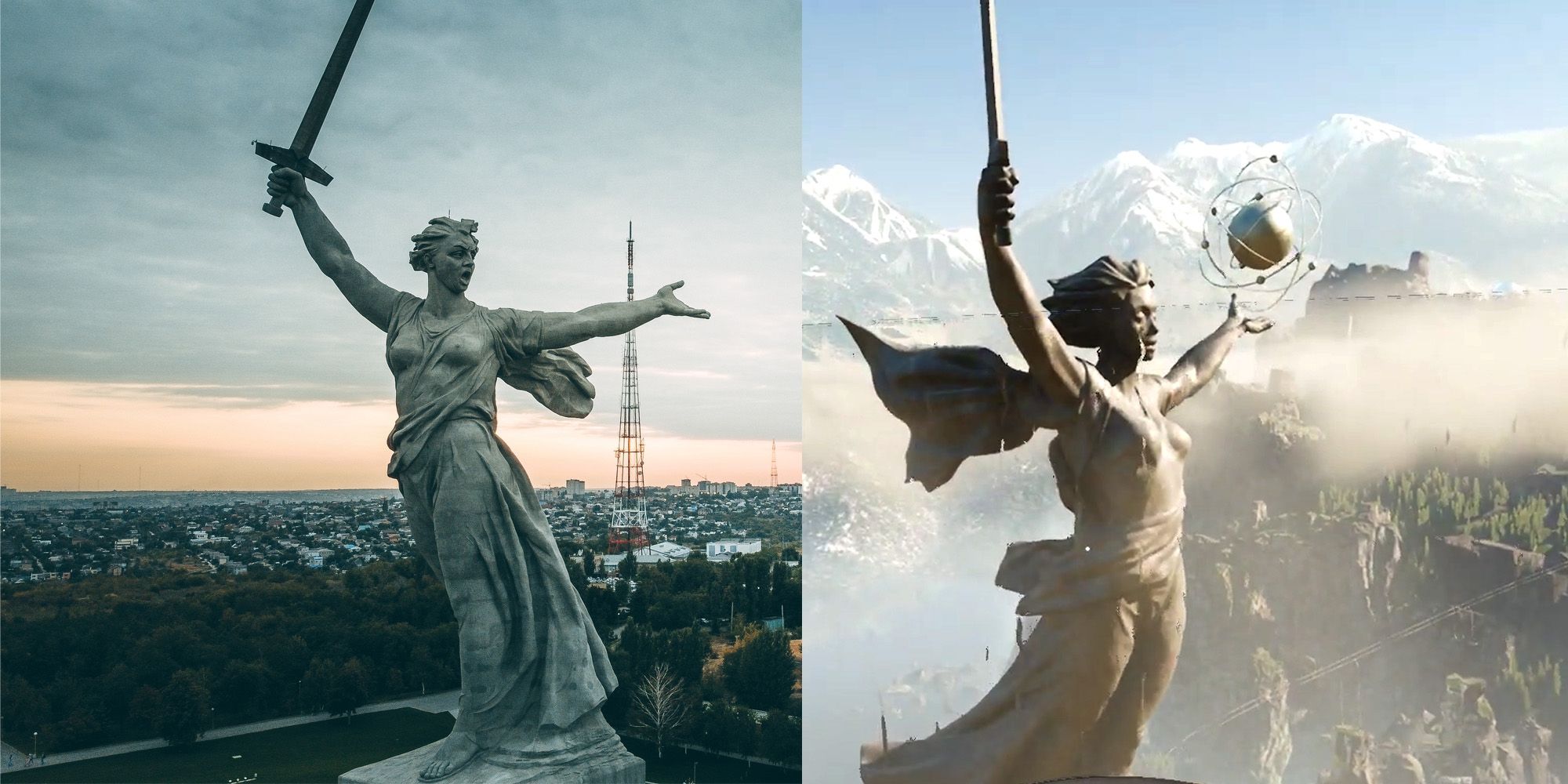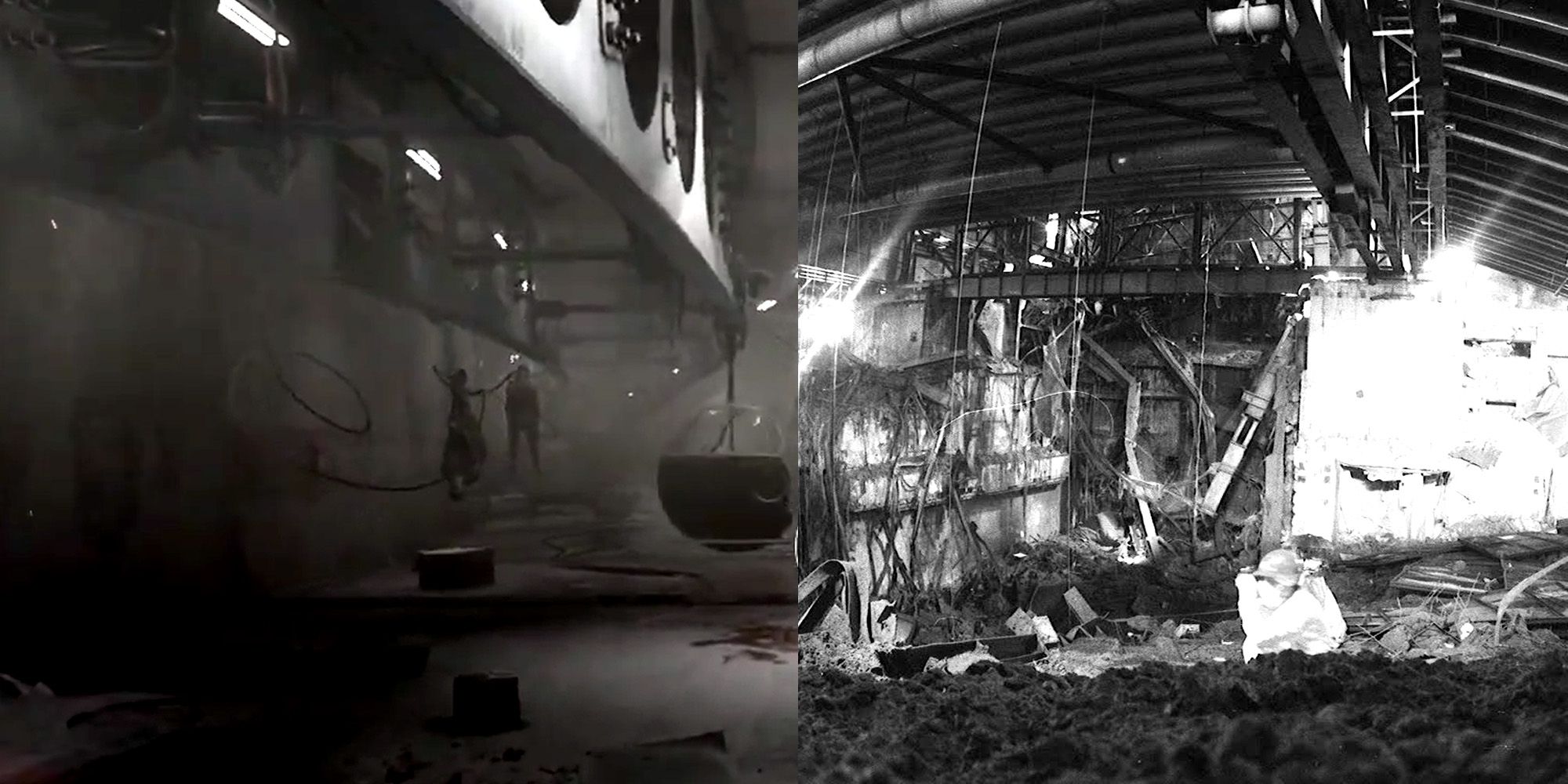In Munfish's recently released Atomic Heart, players step into the role of Sergey Nechayev (Agent P-3) as he explores Facility 3826. Here, the player must fight hostile robots and the results of failed experiments in biomechanics. Meanwhile, P-3 must confront his own damaged memory and deteriorating mental state.
Following the game's release, many parallels can be drawn between the fictional USSR depicted in the game and the real-life relics of the Soviet Union. Several locations throughout the game make direct reference to the USSR and modern Russia, while others take inspiration from totalitarian regimes elsewhere. Atomic Heart's retro-futuristic aesthetic is perhaps its greatest asset. Incredible world designs depict a future in which communism has "succeeded," as well as presenting loud echoes of what led to its inevitable real-world collapse.
6 Chelomey: Inspired By Naukograds
One of the Soviet Union's major operations was the construction and designation of so-called "Science Cities" or "Closed Cities" known as Naukograds. A primary example is the conversion of the formerly-named Stalingrad into the modern-day Volgograd, which boasts a lengthy catalog of Soviet monuments, memorials, and mega-structures. The idea was to create hubs of innovation and technological advancement, with tight control on both information and personnel being enforced.
In Atomic Heart, Chelomey is no different in this regard and is, in fact, taken to a whole new extreme. The city has been elevated into the clouds, drawing parallels with Bioshock: Infinite's setting Colombia. Chelomey's citizens are isolated from the outside world, and are subject to surveillance and medical experiments at the hands of a large workforce of robots. This science-first approach was central to the Soviet autocracy as it allowed for the enforcement of a social hierarchy, headed by the scientifically "enlightened," while still preaching equality - much like a priesthood claims access to a divine 'higher knowledge.'
5 Chelomey Canal: Inspired By The Volga-Don Canal
The first location players will see in Atomic Heart is the beautiful canal of Chelomey complex. Lined with trees on either side and an array of celebratory red flags, balloons, industry buildings, and nationalist monuments, there are a number of similar canals across the world. These man-made rivers were essential for rapidly-expanding societies in the past, enabling the transport of resources throughout a country where there weren't always train-lines and airports.
In Russia, the most notorious canal is the Volga-Don. Built in 1949 by around 900,000 gulag prisoners, it was ready for use just four years later, but cost the lives of over 25,000 workers. Author Alexandr Solzhenitsyn, who worked on the canal as a gulag inmate, claimed that following the death of Stalin, he sat and observed the canal for six hours, during which time only a single boat made use of it. Atomic Heart's canal is a reminder that these aquatic networks link the sheltered beauty of the inner city with the grueling labor and sacrifice of many generations outside its walls.
4 Sechenov Lobby: Inspired By The Hall of Military Glory & Leipzig War Memorial
In Atomic Heart, the Sechenov can be found at the base of Sechenov's highrise. Players will be required to pass through here in order to obtain a car key from The Twins at the start of the game.
The circular building's pantheonic design likely took inspiration of Volgograd's "Hall of Military Glory," though there are influences from other buildings, too. Most notably, the statues lining the walls are reminiscent of the bulky guardians of the Leipzig War Memorial in Germany. This area in the game is an amalgamation of many different aesthetic styles, and a giant hammer and sickle adorning the ceiling is similar to that of the communist Buzludzha Monument in Bulgaria.
3 Sechenov's Highrise: Inspired By Seven Sisters
Having departed the canal boat on Atomic Heart's opening mission, P-3 will then be summoned to Sechenov's office, which is located at the top of a giant high-rise building in the center of Chelomey. The structure is similar in style to that of Stalin's "Seven Sister" skyscrapers built in Moscow between 1947 and 1953.
Differing from the usual brutalist architecture style of most communist constructions, these towers were constructed in a baroque style more reminiscent of traditional European buildings. The buildings serve a range of purposes, from a hotel to the Ministry of Foreign Affairs, but each dominates the surrounding districts and each can be seen from the pinnacle of another.
2 Call of The Motherland: Inspired By The Motherland Calls
One of the larger monuments that players will notice while "Riding Turbines" in Atomic Heart's opening mission is the great statue of a woman holding a sword above her head. As the Facility 3826 audio guide points out, this statue is named "Call of The Motherland" and is said to have been erected in 1949 to mark the victory of the USSR in World War II.
In real life, the statue was erected in 1969 and was given the name "The Motherland Calls." The statue is located in Volgograd (formerly Stalingrad) and was placed upon a hill named Mamayev Kurgan. This location was a significant choice because it acted as a key strategic point during the Battle of Stalingrad, and many thousands of men lost their lives fighting over it. The statue is currently the tallest standing monument depicting a woman anywhere on earth. One marked difference between the statues is that the "Call of The Motherland" in Atomic Heart is depicting holding a giant atomic particle in her left hand, while the real one's left hand is empty.
1 Facility 382: Inspired By Chernobyl
The majority of Atomic Heart's gameplay involves surviving the destruction and mayhem caused by a severe technical malfunction among the world's robotic population. While there might not be any direct visual reference to the nuclear meltdown, the concept of technological innovation being pushed beyond its safety limits is certainly reminiscent of the Chernobyl disaster.
The chaos and disarray often associated with the collapse of the Soviet Union is emphasized heavily, with many in-game references to state control of information and an over-reliance on technology brought about by scientific arrogance. The transformation of an apparent utopia into a rapidly generating dystopia is a theme that links both the history of the Soviet experiment with the premise and storyline of Atomic Heart.
Atomic Heart came out on February 21, 2023, and is available on PC, PlayStation 4, PlayStation 5, Xbox One, and Xbox Series X/S.

